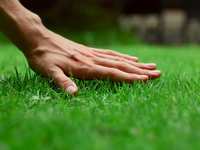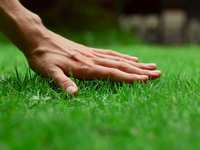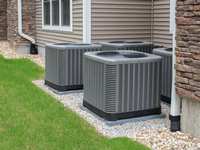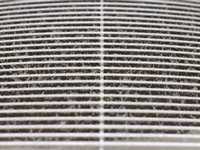- Categories :
- More
Landscaping and Gardening in August in The Woodlands

The long, hot summer can be challenging for both your lawn and landscape, as well as for the gardener. With the fall planting season still a couple of months away, it's essential to navigate these scorching months wisely. Here are some tips to help you manage your landscape during this time:
Annual Flowering Plants
True annuals planted earlier in the year might need replacement unless they are heat-tolerant. Hanging baskets of annuals might also be past their prime and could need replanting.
Heat-tolerant annuals under 2 feet tall include:
- Blue Daze
- Celosia
- Coleus
- Dusty Miller
- Lantana
- Marigold
- Mexican Heather
- Periwinkle
- Portulaca/Purslane
- Certain varieties of Salvia
Heat-tolerant annuals over 2 feet tall include:
- Canna
- Four-o’Clock
- Hardy Hibiscus (Mallow)
- Mexican Sunflower
- Rudbeckia
- Some varieties of Salvia (such as Mealy Blue Sage)
- Shrimp Plant
- Sunflower
When plants become leggy and tired, trim them back and fertilize after pruning to encourage regrowth.
Lawn Care
Watering remains crucial this month. Although we've had a relatively rainy summer, the ground can dry out quickly in August if the showers become sparse. A "good rain" should produce at least ½ inch of water, and your turf needs a minimum of 1 inch of water per week. Flower beds might require more frequent watering.
To measure the amount of water your lawn is receiving, set out pans or cups throughout the yard and run your irrigation system through a full cycle. Ensure every area of the turf receives between ½ and 1 inch of water. Typically, watering two or three times a week is sufficient to provide a total of at least 1 inch per week.
You can also use the "screwdriver moisture test" to check if your lawn is getting adequate water. Push a screwdriver into the ground; you should be able to reach a depth of at least 6 inches. Anything less indicates insufficient watering.
Consider installing a drip irrigation system in flower beds and gardens, as drip irrigation is usually not subject to water restrictions.
Lawn Problems
Be on the lookout for chinch bugs in St. Augustine lawns. Hot, dry weather encourages these pests, which can destroy a yard in days. Signs of chinch bugs typically appear near concrete, such as along driveways, sidewalks, and curbs, where the grass turns brown and dies.
Other lawn pests include fleas and fire ants, which irritate people and animals. Chinch bugs, fleas, and fire ants can be controlled with proper treatment. DIY stores have suitable products, or you can call a reputable professional company like Lawn Ranger Co. for assistance.
A fungus known as "gray spot" (not to be confused with Brown Patch) might also appear. Treat this with a fungicide.
Rose Care
While enduring the worst part of summer, it's time to look ahead to the fall blooming season. Plan on fertilizing and pruning your roses late this month to encourage growth and flowering over the next three months.
Avoid planting or transplanting roses this month; wait for cooler weather. However, late summer fertilizing is crucial for their health. Black spot remains the number one problem for roses, so keep yellow fallen leaves picked up and continue spraying regularly for insect and disease control.
By following these tips, you can keep your lawn and garden healthy and vibrant even through the hottest summer months. Stay cool and garden wisely!
named “BEST OF THE WOODLANDS” (now 12 consecutive years) is OUR assurance we are doing the job we set out to do, and YOUR assurance you won’t get a better service elsewhere. Thank you for your business; thank you for your votes of support.
I am so very proud of our Management Staff: Sonia, Adam, and Craig, and all of our team for their conscientious work. THANK YOU – ALL OF YOU!
TROPICAL PLANTS: March is a transitional month. While a late winter freeze is possible in our area (zone 8), from a historical perspective frosts become less likely after the end of February. All of us are now thinking SPRING TIME. And in most cases, so are the trees, shrubs, and flowering plants.
Now is a good time to trim back or replace those plants that suffered from the hard freeze last month. You probably have some serious tropical plant damage. I tend to be cautious about just yanking them up because if the roots were protected and didn’t freeze, the plant just might come back. You might want to give them some time. If, after a month, you see no new growth, it’s time to replace them.
LAWN CARE: Regular, weekly mowing is just around the corner. Get those mowers tuned up, blades sharpened, and everything in good repair for the upcoming summer. Watch the lawn, and if sufficient growth occurs this month, you should mow. It is unhealthy to the grass if it gets too tall before mowing.
It is OK to fertilize with a professional product that is designed for our Southern lawns. LAWN RANGER COMPANY’s renowned GREEN LAWN SYSTEM is happy to assist with your LAWN CARE.
Cool weather weeds are probably growing in the lawn now. You are advised to use broad-leaf weed-killing herbicides with caution at this time. However, warm-season weeds have not yet become apparent. It isn’t too late to apply a pre-emergent weed treatment before weeds become a problem. Pre-emergent can prevent the seeds from germinating.
TREE CARE: It is getting near the end of the tree and shrub planting window. The chance of survival is rather low on bare-root trees and shrubs this late in the season. (Beware of “close-out” sales on these.) It is better to purchase container-grown or “ball and burlap” plants at this time of year.
FLOWERING SHRUBS: As azalea and camellia plants finish blooming, fertilize them with 3 lbs of azalea-camellia fertilizer per 100 sq. ft. of bed area. Mulch them well and water as needed.
Azaleas should be shaped and trimmed immediately post-bloom. That is because next year’s blooms will come from “old wood.” By waiting until later in the year to trim, you might be compromising next year’s blooms.
TRIMMING AND CUTTING BACK: If you haven’t trimmed or pruned your roses, do so now. Fertilize every 4 to 6 weeks from now through summer. Regular spraying for blackspot should begin as soon as new leaves begin to open. Regular spraying should continue through the growing season.
Verbena can be cut back now, along with Lariope, Louisiana Iris, and Agapanthas. It will be necessary to cut back philodendron and Ginger if yours suffered freeze damage, as did mine.
If plants are getting too tall for their environment, cut the longest stems off.
Note: Live Oak trees tend to drop their leaves in March. Leaves left on the turf now can cause problems. Rake them for the compost pile or mulch them up so they don’t hinder the new growth of the turf.
One more thing: please LIKE us and FOLLOW us on our website, FaceBook, and Twitter. The links are listed below.
SEND US YOUR QUESTIONS AND COMMENTS
Thank you for your questions and comments. We can be contacted at our offices at
281-681-1025, or through our web site: www.LawnRangerCompany.com.
“Like” us on FaceBook at www.facebook.com/lawnrangercompany
Follow us on Twitter: @lawnranger_walt
Check out a few videos at www.youtube.com/lawnrangercompany
Voted BEST OF THE WOODLANDS 2010,'11,'12,'13,’14,’15,’16,’17,’18,’19,’20,’21,22,23,24

















